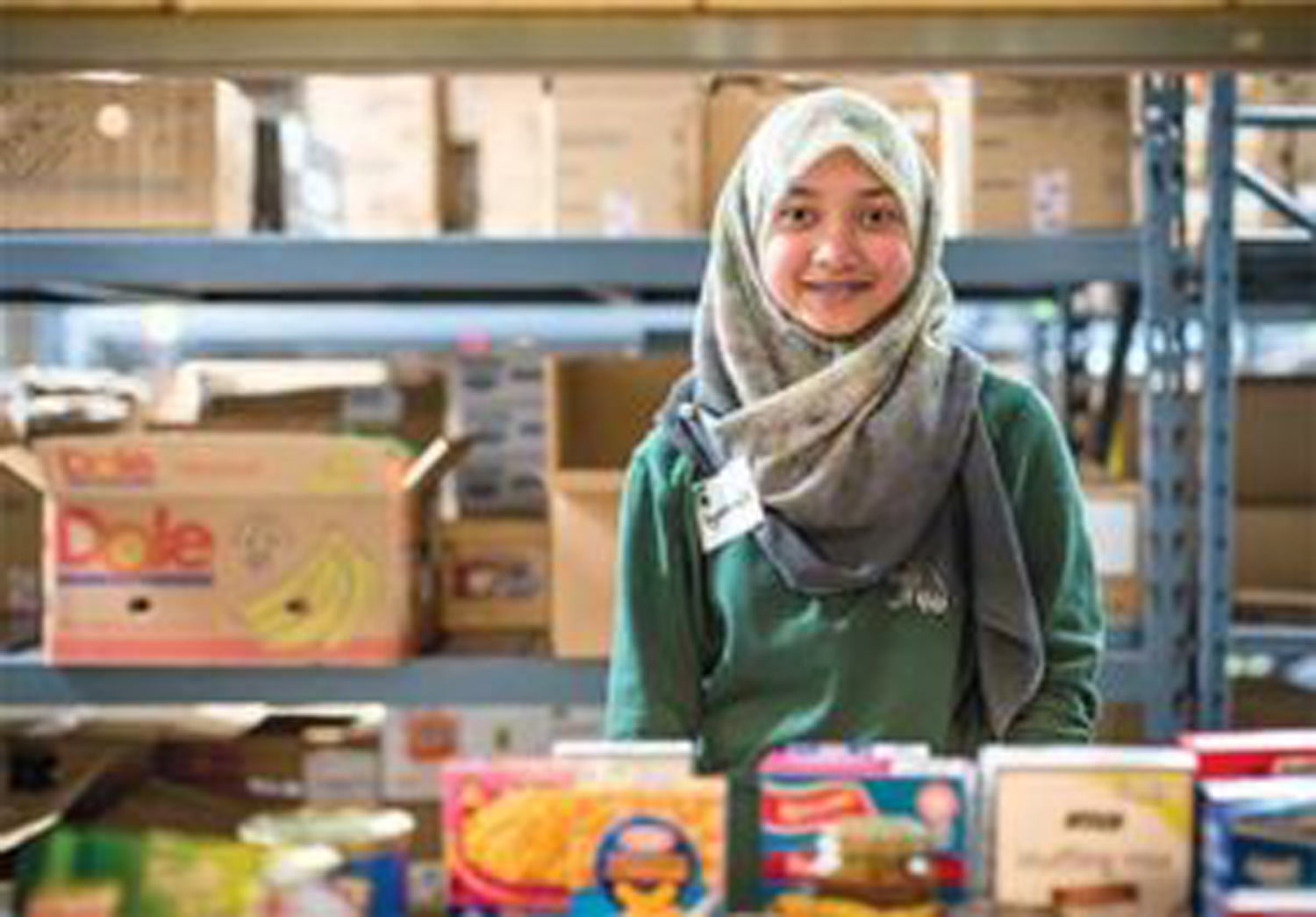MSU Food Bank Provides Relief to College Students
Are College Students the new Face of Hunger?
When Onur Agirseven came to the United States from Turkey to study, he learned quickly that he would need to be “fiscally smart about things,” he says. Now a PhD student in math and a teaching assistant at Michigan State University, his visa only allows him to work on campus and up to 20 hours a week beyond his assistantship. It’s a system that is “scaled with old assumptions,” he says.
While graduate students might not be the first folks who come to mind when one thinks of food insecurity, it turns out that is a fact of life on American college campuses. As they struggle with graduate tuition, jobs and even families, many turn to campus food banks for help getting through each month.
“We serve MSU students and families,” says Nathaniel Smith- Tyge, director of MSU’s Student Food Bank and co-founder of the College and University Food Bank Alliance. “About 60% are graduate students. Those tend to be students on very tight budgets.” He should know; he earned a master’s degree at the University of Michigan at the height of the recession. No one was hiring, so he decided to go for a PhD. He is working on his dissertation while running the MSU food bank.
Though demand for food has been steady since the recession, “We have seen a slight uptick this year,” he says. “I don’t quite know why.” The MSU food bank is serving 4,000 students and their families per year. These include teaching assistants, students on research fellowships and international students, who are ineligible for public assistance such as food stamps.
“They have a fixed amount of income; they’re restricted by their visas as to the kind of work then can do,” Smith-Tyge says. Undergraduates served are often non-traditional students. Rarely is a client homeless, but couch-surfing is not uncommon, he says. “They really are stories of perseverance.”
Founded in 1993 by students and staff, the MSU food bank is the first campus-based food bank in the nation. Students with proof of enrollment who do not have a meal plan, and their families, are eligible. Staffed by volunteers, distributions take place twice a month at the Olin Health Center on campus.
“A lot of our stuff is canned and non-perishable,” Smith- Tyge says. “We try and have as much fresh vegetables and bread (as possible),” to accommodate those who don’t have full access to a kitchen. The food bank purchases food from the Greater Lansing Food Bank at below-wholesale cost.
“The overall point of what we do here at the food bank is alleviating or relieving the overall stress on the student, which will allow them to complete their degree in a timely fashion,” Smith-Tyge says. A lot of our clients do work—sometimes multiple jobs.” But these days, he says, “You can’t have a part-time job, or summer job that I’m aware of that’s legal, where you can pay your tuition.”
The MSU food bank is a nonprofit entity and a registered student organization. While not a part of MSU’s budget, it is supported by some departments and organizations, including the Council of Graduate Students. Office space and utilities are free, thanks to the Olin Health Center. So 99 cents of every dollar raised buys food, which is something not all nonprofits can claim, Smith-Tyge says.
Support from the university goes back to the beginning, explains co-founder Dennis Martell, PhD, MSU’s health education coordinator. He was a PhD student and president of the Council of Graduate Students when Bea Mott, former executive secretary to two MSU presidents, “came to me and said, ‘Dennis, I think we need to start a food bank.’” At the time, the only food assistance available was a few Thanksgiving baskets.
The food bank’s initial funding came from student government and Mott and her husband, Roy. “It was a real community,” Martell says. “We were all volunteers and we just loved doing it.”
The College and University Food Bank Alliance started in 2012 with 13 members. It’s now up to 180 from all over the country, including many other Michigan-based colleges and universities large and small. At MSU the number of students being served is up “exponentially,” Martell says.
Nearly 300 people may line up for food on any given night. “Sometimes when we open we’re so full that we’re close to violating fire laws,” he says. The evenings have blossomed into resource-sharing opportunities as students from the huge university meet and talk.
It’s no secret that the overall cost of going to college has gone way up in Michigan. In the 1970s, 75% of the university’s budget came from appropriations. Now, it’s less than 25%. University meal plans for graduate students are available but pricey. Some of those students “are doing some of the most important work on campus,” he says. “Were it not for the food bank, they would have a hard time doing what they’re doing.”
Agirseven says such students are dedicated to completing their education. “The vast majority of them are willing to take on these challenges,” he says. Thanks to the food bank, Smith-Tyge says, “While they’re here, people won’t have to worry about where their next meal is coming from.”
Find out more at MSU Food Bank







